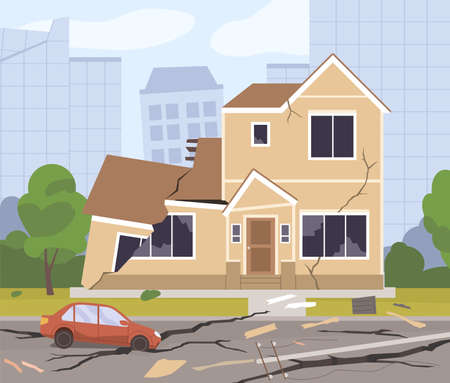Identifying Typical Roof Problems in the UK
Across the UK, homeowners and property managers frequently contend with a variety of roofing issues, primarily driven by the region’s unpredictable weather patterns and the age or type of roofing materials commonly used. From heavy rainfall and high winds to frost and moss growth, these factors all contribute to premature wear and recurring maintenance needs. It’s crucial to recognise the most prevalent problems early on to prevent costly repairs down the line.
| Region | Common Roofing Issues | Main Causes |
|---|---|---|
| England (South) | Tile slippage, water ingress | Heavy rain, clay tile ageing |
| Scotland | Slate cracking, moss buildup | Freeze-thaw cycles, persistent dampness |
| Northern Ireland | Loose flashing, gutter blockages | High winds, leaf debris |
| Wales | Moss growth, leaking ridges | Frequent rain, older slate roofs |
The table above highlights how specific weather conditions and traditional roofing materials in different regions influence the types of roof problems encountered. Regular inspections are essential for spotting early signs of damage such as missing tiles, damp patches on ceilings, or excessive moss on roof surfaces. Homeowners should also be aware that older properties may be more susceptible due to outdated construction methods or worn-out materials.
Dealing with Leaks and Damp Patches
Leaks and damp patches are among the most frequent roofing issues faced by UK homeowners, largely due to the country’s notoriously wet climate. Identifying the precise source of a leak can be challenging, as water often travels along roof timbers and other structures before appearing inside your property. Here is a step-by-step guide to help you locate and address these problems effectively:
Locating the Source of Leaks
Begin your inspection in the loft or attic space with a torch during or after heavy rain. Look for signs of moisture, water trails, or darkened timbers. Follow these steps for a systematic approach:
| Inspection Area | What to Look For |
|---|---|
| Loft/Attic | Damp insulation, water stains on beams, mould growth |
| Roof Exterior | Cracked, missing, or slipped tiles; damaged flashing; blocked gutters |
| Chimney & Valleys | Deteriorated mortar, loose leadwork, pooling water |
The Impact of the UKs Wet Climate
The persistent rain and high humidity levels across Britain make roofs especially vulnerable to leaks. Prolonged exposure to moisture can not only damage internal ceilings and walls but also compromise the structural integrity of timber supports if left unaddressed.
Practical Steps for Patching and Waterproofing
Once youve identified the problem area, follow these practical repair steps:
- Replace Damaged Tiles: Carefully remove broken or slipped tiles and fit new ones, ensuring they are securely fixed.
- Repair Flashings: Use lead sealant or replace sections of lead flashing around chimneys and joints where gaps have formed.
- Patching Felt Membranes: Apply roofing felt adhesive to patch small tears or holes in underlayments beneath tiles.
- Seal Gutter Joints: Clean out debris from gutters and apply waterproof sealant to any leaking joints.
- Apply Waterproof Coatings: For flat roofs, use a liquid waterproof membrane over cleaned surfaces for an extra layer of protection against future leaks.
Ongoing Maintenance Tips
To prevent recurrence, schedule regular roof inspections—especially after storms—and keep gutters clear of leaves and moss. Early intervention is key to avoiding costly repairs down the line.

3. Addressing Missing or Damaged Tiles and Slates
The unpredictable and often stormy British weather is notorious for causing roof tiles and slates to become loose, shift out of place, or even go missing entirely. Strong winds, heavy rain, and freezing temperatures can all contribute to this common issue, which, if left unaddressed, may lead to leaks and further structural damage. It’s crucial for UK homeowners to inspect their roofs regularly—especially after a bout of bad weather—and to act promptly when problems are spotted.
Why Do Tiles and Slates Shift?
British roofs are typically constructed with either clay or concrete tiles or traditional slate. These materials, while robust, are not immune to the effects of severe weather. High winds can lift tiles or slates from their fixings, heavy rainfall can loosen mortar beds, and freeze-thaw cycles may crack or dislodge materials. Over time, these factors weaken the roof’s integrity.
Step-by-Step Guide: Replacing or Securing Roof Tiles/Slates
| Step | Action | Key Considerations |
|---|---|---|
| 1 | Safety First | Use suitable ladders or scaffolding; wear non-slip footwear; never work alone. |
| 2 | Inspect the Roof | Identify missing, broken, or shifted tiles/slates—take photos for reference. |
| 3 | Remove Damaged Pieces | Carefully lift adjacent tiles/slates using a slate ripper or similar tool. |
| 4 | Prepare Replacement | Select matching tiles/slates; ensure they fit securely into the existing pattern. |
| 5 | Fix in Place | Nail down new pieces (for tiles) or use copper nails/hooks (for slates); check alignment. |
| 6 | Seal if Needed | If mortar was used previously, repoint joints with a suitable roofing mortar mix. |
When to Call a Professional Roofer?
If you encounter widespread damage, steep roofs, or complex slate patterns—common in older British homes—it’s wise to contact a certified local roofer. Professionals possess both the technical know-how and safety equipment necessary for effective repairs.
Maintenance Tip:
Catching and securing loose tiles or slates early prevents expensive water ingress and extends your roof’s service life—a classic example of “a stitch in time saves nine” in British home maintenance.
4. Preventing and Treating Moss and Algae Growth
British roofs, especially those in damp or shaded areas, are prime targets for moss, lichen, and algae growth. Left untreated, these organisms can retain moisture, cause tiles to deteriorate, and even block gutters—leading to costly repairs. Below are practical tips for safe removal and ongoing maintenance to keep your roof clear and in good condition.
Tips for Safely Removing Moss, Lichen, and Algae
| Step | Description | Recommended Tools/Products |
|---|---|---|
| 1. Safety First | Always use a sturdy ladder with stabilisers, non-slip footwear, and consider using a safety harness. | Ladder with stabilisers, safety harness, gloves |
| 2. Manual Removal | Gently scrape off moss using a specialist roof scraper or stiff brush. Avoid high-pressure washing as it may damage tiles. | Roof scraper, stiff brush |
| 3. Chemical Treatments | Apply a UK-approved moss killer or biocide designed for roofing. Follow manufacturer’s instructions closely. | Moss killer/biocide (roof safe) |
| 4. Gutter Clearance | Clear any debris from gutters to prevent water overflow and further moss growth. | Gutter scoop or trowel, bucket |
Maintenance Routines to Prevent Regrowth
- Annual Roof Inspection: Check your roof every autumn for early signs of moss or algae buildup and deal with minor patches promptly.
- Trim Overhanging Branches: Reduce shade by cutting back trees near your roof to allow sunlight to dry out damp areas.
- Improve Drainage: Ensure gutters and downpipes are clear so rainwater can flow freely away from the roof structure.
- Copper or Zinc Strips: Installing strips near the ridge tiles can help inhibit future moss growth as rainwater washes trace amounts over the tiles.
- Avoid DIY Pressure Washing: High-pressure cleaning can dislodge tiles and force water under them—opt for manual methods or professional services when needed.
Moss and Algae Prevention: At-a-Glance Checklist
| Task | Frequency |
|---|---|
| Visual inspection for growths | Every 6-12 months |
| Moss scraping & removal | As needed (usually yearly) |
| Chemical treatment application | Every 1-2 years or as recommended |
| Trimming overhanging trees | Annually or as required |
| Gutter clearing | Twice a year (spring & autumn) |
| Copper/zinc strip inspection | Annually after installation |
If in Doubt… Call a Professional!
If you’re unsure about working at height or dealing with persistent regrowth, it’s wise to consult a local roofing contractor familiar with UK conditions to ensure the job is done safely and effectively.
5. Fixing Blocked Gutters and Downpipes
Blocked gutters and downpipes are a frequent headache for UK homeowners, especially after the autumn leaf fall. When left unchecked, clogged drainage can cause rainwater to overflow, leading to costly damage to roofs, brickwork, and even interior walls. To prevent these issues, it’s vital to regularly clear debris and maintain effective water flow. Here’s how you can tackle this common roofing problem:
Step-by-Step Instructions for Clearing Gutters and Downpipes
- Safety First: Always use a sturdy ladder placed on firm ground. Consider asking someone to steady the base.
- Remove Debris: Using gloved hands or a gutter scoop, remove leaves, moss, and twigs from the gutter channel. Dispose of the debris in a bucket.
- Flush with Water: Use a garden hose to flush out any remaining dirt. Start at the end opposite the downpipe so water carries debris towards the outlet.
- Check Downpipes: If water doesn’t flow freely through the downpipe, use a plumber’s rod or drain snake to dislodge blockages. For stubborn clogs, try inserting the hose directly into the downpipe and running water at pressure.
- Inspect for Damage: While cleaning, look for cracks or sagging sections that may need repair or replacement.
Maintenance Schedule After Autumn Leaf Fall
| Task | Frequency |
|---|---|
| Clear gutters and downpipes | Every autumn (after leaf fall), plus spring check |
| Inspect for leaks or damage | Twice a year |
| Flush system with water | Annually or as needed after heavy storms |
The Importance of Regular Gutter Maintenance
A well-maintained gutter system is your home’s first defence against penetrating damp, structural decay, and unsightly staining on render or brickwork. By prioritising regular checks—especially after autumn—you’ll save yourself from expensive repairs while keeping your roof and walls in top condition throughout the unpredictable British weather.
6. Improving Roof Insulation and Ventilation
Proper roof insulation and ventilation are vital for maintaining a comfortable home environment and reducing energy bills—especially in the UK, where the climate can swing from damp winters to occasionally stifling summers. Inadequate insulation or poor airflow can lead to heat loss, condensation, and even structural damage over time. Below are practical suggestions to enhance your roof’s thermal efficiency and combat common issues:
Why Insulation and Ventilation Matter
Without suitable insulation, heat escapes rapidly during winter, causing higher heating costs and colder interiors. Similarly, insufficient ventilation traps moisture, leading to mould growth and timber decay. These problems are prevalent in both older terraced homes and modern builds across the UK.
Recommended Insulation Types
| Insulation Material | Main Benefits | Common Application Areas |
|---|---|---|
| Mineral Wool (Rockwool/Glasswool) | Excellent thermal performance, soundproofing, fire resistance | Loft spaces, between rafters |
| PIR Boards (Polyisocyanurate) | High insulation value for slim profiles, moisture resistant | Flat roofs, dormers |
| Spray Foam | Airtight seal, fills awkward gaps, prevents draughts | Converted lofts, irregular spaces |
Steps to Boost Thermal Efficiency and Prevent Condensation
- Upgrade Loft Insulation: Most UK homes benefit from at least 270mm of loft insulation. Older properties may have inadequate layers—topping up can make an immediate difference.
- Install Vapour Barriers: Place vapour control layers beneath insulation to block moist indoor air from reaching cold roof timbers.
- Improve Ventilation: Fit soffit vents or tile vents to ensure a steady flow of air through the loft space. This helps prevent condensation build-up in colder months.
- Draught Proofing: Seal gaps around hatches and eaves but avoid blocking essential airflow routes.
- Check Eaves and Gutter Maintenance: Clear gutters regularly to prevent water ingress that exacerbates dampness near roof edges.
When to Seek Professional Help
If you notice persistent condensation, unexplained damp patches on ceilings, or visible mould growth despite basic interventions, it is wise to consult a local roofing specialist. They can assess whether you need advanced solutions such as breathable membranes or mechanical ventilation systems tailored for UK weather patterns.
Tackling insulation and ventilation as part of regular roof maintenance not only prolongs your roof’s lifespan but also improves overall home comfort—helping you stay cosy through British winters and cool during those rare summer heatwaves.
7. When to Call a Professional Roofer
While many minor roofing issues can be tackled with a bit of DIY know-how, there are circumstances where calling a qualified UK roofing specialist is not only advisable but essential for your safety and the long-term health of your property. Recognising when a problem is beyond basic repairs can prevent costly damage and ensure your roof remains structurally sound against the unpredictable British weather.
Signs That Indicate You Need a Professional
| Issue | Description | Why Call a Pro? |
|---|---|---|
| Persistent Leaks | Water stains on ceilings or walls that reappear after attempted repairs. | Underlying causes may be hidden; improper fixes can worsen the issue. |
| Sagging Roof Deck | Noticeable dips or curves in the roofline from inside the loft or externally. | This suggests structural problems needing expert assessment and repair. |
| Widespread Moss & Algae | Moss covering large areas, causing tiles to lift or deteriorate. | Specialist cleaning and treatment required to avoid tile damage. |
| Damaged Flashing | Loose, corroded, or missing metalwork around chimneys and joints. | Poorly installed flashing can lead to major leaks and internal damage. |
| Tiled Roofs with Multiple Cracks | Several cracked or slipped tiles across different areas of the roof. | A professional inspection ensures all issues are addressed properly. |
Complex Roofing Materials & Regulations
If your property has slate, thatch, or heritage tiles, repairs often require traditional methods and compliance with local building regulations or conservation area requirements. Attempting DIY fixes on listed buildings can result in legal issues or further damage. Always consult a specialist familiar with UK standards and materials.
The Importance of Qualified Roofers
Professional roofers in the UK should carry appropriate insurance, be certified by relevant bodies (such as NFRC or CompetentRoofer), and provide guarantees for their work. This ensures repairs meet safety standards and offer lasting protection against the elements. Don’t hesitate to request credentials before hiring any contractor.
Key Takeaway
If you encounter any uncertainty about the source of a roofing issue, suspect structural weaknesses, or face persistent problems despite repairs, it’s time to bring in a professional roofer. Prompt action by an experienced specialist not only protects your home but also gives you peace of mind through every season in the UK.


